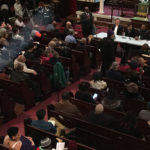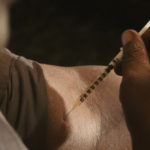Top 5 Live-WURD Monday November 2
1. Russian plane crash in Egypt: What we know so far
The only reasonable explanation for the crash of a Russian passenger jet in Egypt is “an external influence,” an executive from the airline that operated the flight said Monday, stressing that planes don’t just break apart in midair.
Kogalymavia Flight 9268 broke into pieces before it hit the ground in a remote area of Egypt’s restive Sinai Peninsula on Saturday, killing all 224 people on board.
“We exclude technical problems and reject human error,” Alexander Smirnov, a Kogalymavia airline official, said at a Moscow news conference as he discussed possible causes of the crash.
He added that the crew did not issue any warnings or communications during the final moments, indicating that the flight crew must have been disabled and not able to radio out.
However, Smirnov said that while the plane’s flight and voice data recorders had been recovered, they had not been read or decoded.
2. Kennett Square police probe reports of needles in Halloween candy
Police in Kennett Square have launched a candy tampering investigation after needles were reportedly found in several children’s Halloween hauls.
Sewing-type needles were discovered inside five wrapped Twix bars given to four children from different households as they trick-or-treated in the Stenning Hills area Saturday night, police said.
A fifth person came forward shortly after noon on Sunday to report finding a similar needle in a Snickers bar, according to authorities.
That child hadn’t been trick-or-treating in the Stenning Hills area of the one-square-mile borough, but he had been going door to door elsewhere on the west side of town Saturday night, Kennett Square Mayor Matt Fetick said.
No one ingested the contaminated candy, and no injuries were reported.
3. Man charged in St. Louis area church fires
A 35-year-old man with an extensive criminal record was charged on Friday in connection with a string of suspected arson fires at St. Louis-area churches, police said.
David Lopez Jackson, 35, was charged with two counts of second-degree arson in connection with fires set at the doors of two predominantly African-American churches in St. Louis, police said. He is also a suspect in five other church fires in St. Louis and a suburb since Oct. 8, according to police.
Jackson, who is black, has a long criminal record, including charges of domestic assault, burglary, drug-related crimes, resisting arrest and assaulting an officer, police said. He is being held on a $75,000 cash-only bond.
No one was injured in the small fires, which damaged the two Catholic and five Protestant churches. Most have primarily black congregations, although the Shrine of St. Joseph church has a mostly white congregation.
4. Biased Lending Evolves, and Blacks Face Trouble Getting Mortgages
For years, federal regulators say, executives at Hudson City Savings Bank, New Jersey’s largest savings bank, did what they could to keep certain customers out.
They steered clear of black and Hispanic neighborhoods as they opened branches across New York and Connecticut, federal officials said. They focused on marketing mortgages in predominantly white sections of suburban New Jersey and Long Island, not in Newark or in Bridgeport, Conn.
The results were stark. In 2014, Hudson approved 1,886 mortgages in the market that includes New Jersey and sections of New York and Connecticut, federal mortgage data show. Only 25 of those loans went to black borrowers.
Hudson, while denying wrongdoing, agreed last month to pay nearly $33 million to settle a lawsuit filed by the Consumer Financial Protection Bureau and the Justice Department. Federal officials said it was the largest settlement in the history of both departments for redlining, the practice in which banks choke off lending to minority communities.
5. In Heroin Crisis, White Families Seek Gentler War on Drugs
When the nation’s long-running war against drugs was defined by the crack epidemic in poor, predominantly black urban areas, the public response was zero tolerance and stiff prison sentences. Today’s heroin crisis is different. While heroin use has climbed among all demographic groups, nearly 90 percent of those who tried heroin for the first time in the last decade were white.
And families of those lost to heroin are now prodding government to treat it as a disease, not a crime.
“Because the demographic [is] more white, more middle class, these are parents who are empowered,” said Michael Botticelli, director of the White House Office of National Drug Control Policy. “They know how to call a legislator … how to get angry with their insurance company … how to advocate. They have been so instrumental in changing the conversation.”
“How these policies evolve in the first place, and the connection with race, seems very stark,” said Marc Mauer, executive director of the Sentencing Project, which examines race and criminal justice.
Click here to read these stories on 900amWURD.

Solomon Jones is an Essence bestselling author and award-winning columnist. He is the creator and editor of Solomonjones.com and morning host on 900 am WURD radio. Click here to learn more about Solomon








